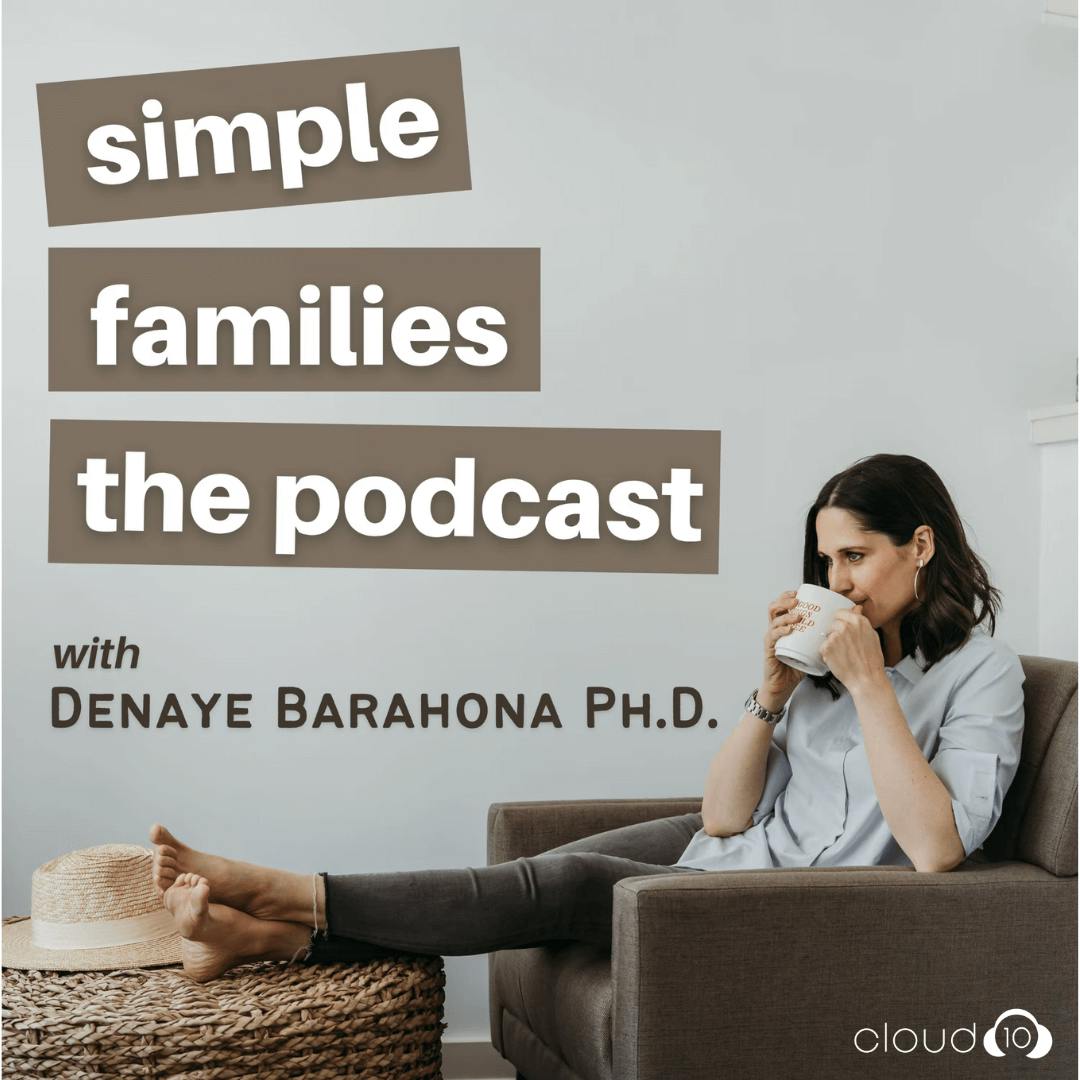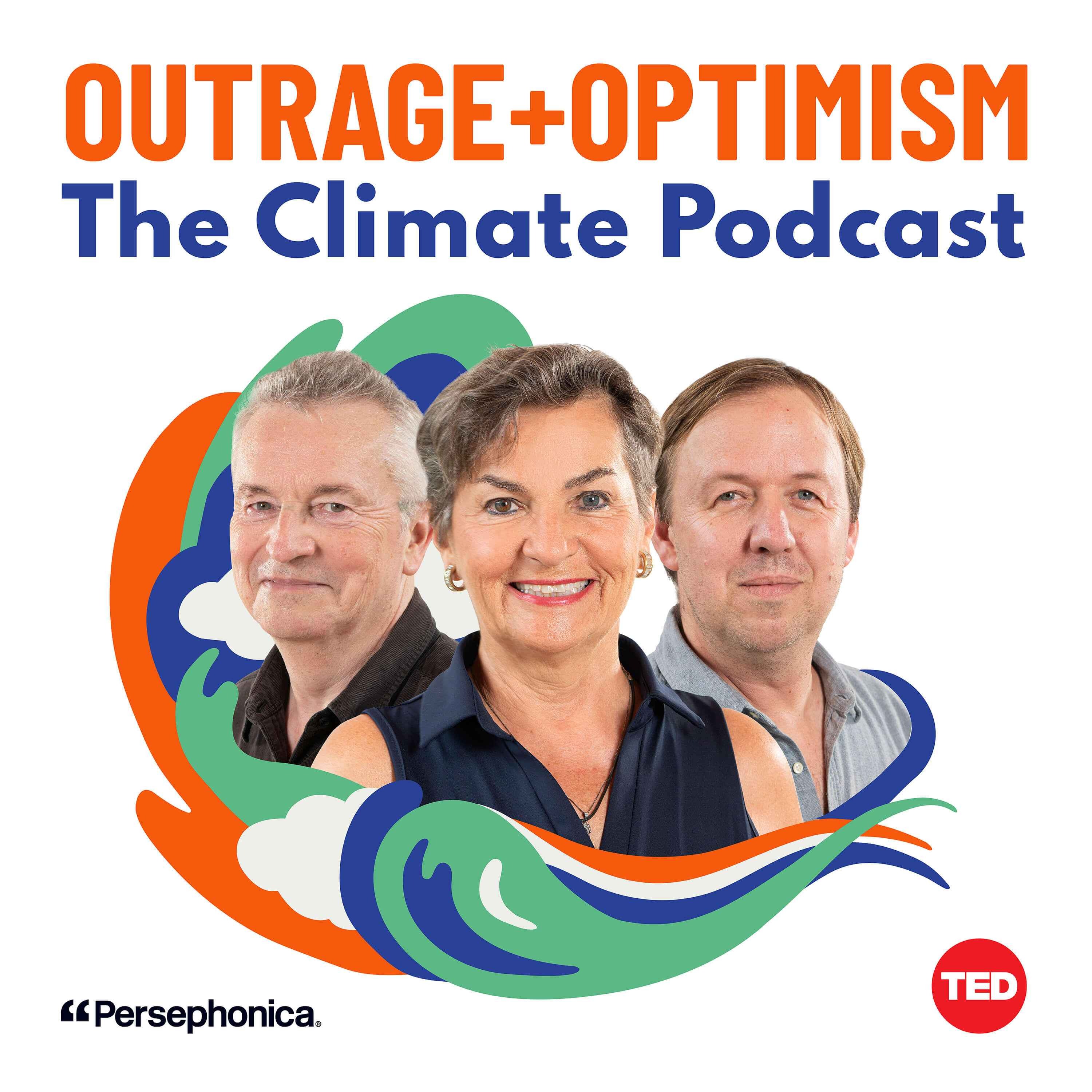
Sustainable in the Suburbs
Want to waste less, save more, and make your home a little more eco-friendly? Sustainable in the Suburbs is your go-to podcast for practical, judgment-free tips and real-life stories to help you build sustainable habits that actually stick.
Hosted by Sarah Robertson-Barnes — a suburban soccer mum, sustainability educator, and founder of the blog Sustainable in the Suburbs — this weekly show brings doable advice, honest conversations, and actionable ideas to help you waste less, spend smarter, and live more sustainably at home.
Because sustainable living doesn’t have to be perfect to matter — and you don’t have to do it all to make a big impact.
Start where you are, use what you have, and live a little greener.
Sustainable in the Suburbs
8: 5 Easy Plastic-Free Kitchen Swaps for Sustainable Living
The kitchen is one of the biggest sources of household waste — but it’s also one of the easiest places to start making a change. In this episode of Sustainable in the Suburbs, Sarah shares five practical, affordable, and genuinely useful swaps to help you cut down on plastic and reduce waste at home. From ditching paper towels to upgrading your containers, these swaps are all about progress, not perfection. Check out the links below for Sarah’s go-to reusables and top plastic-free kitchen tips.
Whether you're starting from scratch or just looking for a couple of easy wins, this is a great place to begin.
Takeaways
- Why the climate action begins at the kitchen table.
- 5 practical, affordable swaps that actually reduce wastes.
- Simple, low-waste tips for daily life.
- How every small shift adds up (without overhauling your home).
One Small Shift:
Pick just one thing to swap this week. Whether it’s replacing paper towels, trying out a reusable bag, or mixing up a batch of DIY cleaner — it all counts!
Product Recommendations
Cleanings, soap, and laundry tablets
Resources
A Beginner’s Guide to a Sustainable Kitchen (use code PODCAST20 to save 20%)
Plastic Free July: 31 Easy Swaps to Reduce Plastic Waste
10 Zero Waste Kitchen Swaps That Save You Money
How to Clean a Wooden Dish Brush
What to Use Instead of Paper Towels: 5 Easy and Sustainable Alternatives
Connect With Me
Sustainable in the Suburbs is mixed and edited by Cardinal Studio
If you enjoyed this episode, I’d love it if you followed the show, shared it with a friend, or left a rating and review. Every little bit helps more people find Sustainable in the Suburbs — and live a little greener.
Hi Mike, it's Sarah. So this will be for episode 10, um, loose working title five plastic free kitchen swaps. So we'll start with the cold open. All right, cold open. Reducing waste can feel really complicated, but it's actually quite simple. Stop buying stuff you use once just to throw it away five seconds later. Done. Sort of, it's actually a little more complicated. All right, intro music. Here we go. I'm going to remember to breathe and pause. Hi friends and welcome back to the Sustainable in the Suburbs podcast. Nope, immediate fail. Okay. Hi friends and welcome back to Sustainable in the Suburbs, the podcast where we start where we are, use what we have, and live a little greener. Since it's plastic free July, I want to talk about one of my favorite places to start making simple, sustainable, and of course, plastic free swaps in your kitchen. I firmly believe that climate action begins at the kitchen table because the kitchen is the heart of our homes. It's where we gather, cook, eat and connect. And we all know every party ends up in the kitchen, but it's also one of our biggest sources of household waste from plastic packaging, single use items, food waste. It all adds up really fast. And if you want to get a clearer picture of what's happening in your kitchen, be sure to check out episode four, where I walked you through how to do a household waste audit. Breathing, okay. Now, as always, the goal here isn't perfection. A quote, zero waste or plastic free kitchen just isn't realistic for most people, but we can make some real changes. And honestly, when you stop and think about how much we spend on things we buy just to throw them away, these swaps aren't just good for the planet. They're good for your wallet too. So today I'll share some simple, affordable swaps you can make in your kitchen to cut down on plastic, save you money and build habits that actually stick. And before we dive in, just a quick note, if you want to go back to now, the goal here is imperfection. Okay. Now, as always, the goal here isn't perfection. A quote, zero waste or plastic free kitchen just isn't realistic for most people, but we can make some real changes. And honestly, when you stop and think about how much we spend on things we buy just to throw them away, these swaps aren't just good for the planet. They're good for your wallet too. So today I'll share some simple, affordable swaps that you can make in your own kitchen to cut down on plastic, save money and build some sustainable habits that actually stick. And before we dive in, just a quick note, if you want to support the show and the work I do here, you can check out the links in my show notes. Some of these are affiliate links for products I personally use and love, and I do my best to source directly from the brands or from small shops that I really love. You won't find any Amazon links here. So if you do choose to shop through those links, it helps keep the podcast going. And I really appreciate it. All right, transition music. So why start in the kitchen? When we think about where plastic is accumulating in our homes, the kitchen is usually top of mind from food packaging to cleaning products and convenience items. So much of it is designed to be used once and then. transition music. Okay, I'll take that one again. Why is breathing so hard? Okay. So why start in the kitchen? When we think about where plastic is accumulating in our homes, the kitchen is usually top of mind. From food packaging to cleaning products and convenience items, so much of it is designed to be used once and then thrown away. That also makes it one of the most effective and visible... It's going great today, here we go. So why start in the kitchen? When we think about where plastic is accumulating in our homes, the kitchen is usually top of mind. So think about things like food packaging, cleaning products, convenience items. So many of these things are designed to be used once and then just thrown away. So that makes it one of the most effective places to start making changes. Of course, the kitchen isn't the only place where plastic builds up. The bathroom is another big one, but that's a conversation for another day. and there will definitely be future episodes about that. Okay. So the kitchen garbage kind of feels like the final stop for almost everything that leaves our homes. Doesn't it? It's a bit of a grab bag. If you take a peek inside, you'll spot things like food packaging, plastic bags, cling wrap, snack wrappers, Ziploc bags, styrofoam, takeout containers. Side note, did you know that black plastic is not recyclable because it can't be seen by the sensors on the conveyor belt. So reuse those takeout containers. Anyhow, you're also throwing away things like bubble mailers, coffee cups and lids, paper towels, straws, cutlery, diapers, textiles, coffee pods, batteries, on and on and on. But here's the good news. With a few simple swaps, you can cut back significantly on that waste and save money while you're at it. Now I want to be really clear before we get into the list of swaps that this is not about throwing out all the stuff you already have just to buy something that's quote, a more sustainable. takes some time to figure out what works for you for your needs, for your budget, your circumstances, and what just doesn't start by using up what you already have. And in the meantime, while you're waiting for that to run out, consider the swaps that are doable for you and then integrate them one at a time. Even one swap is a win. because every time you swap out something single use for something reusable, you're building habits that feel good, that work for your real life and save you money in the long run. Lean into what you can do and try not to worry too much about what you can't. All right, so let's get into it. I'm going to take you through what I think are five of the most practical, affordable swaps that you can make in your kitchen. Sorry, I'm out and I think you can hear my chair. So I'll do that last one again. All right, so let's get into it. I'm going to take you through what I think are five of the most practical, affordable swaps that you can make in your kitchen. All right, and then we'll put in a little transition sound. Swap number one, cloth towels instead of paper towels. Now I know that paper is not plastic, but just stay with me here. And I'll be honest, paper towels are my pet peeve and I could talk about this for 20 straight minutes. I'll probably end up doing a whole episode on it, but here's the too long didn't read. Paper towels are definitely something that we purchased just to use. Paper towels are definitely something that we purchase just to use for a few seconds and then throw away. They're definitely convenient. I just said definitely a bunch of times. All right. Paper towels are a great example of something that we purchase just to use for a few seconds and then throw them away. They're definitely convenient, but they are also incredibly wasteful. The sheer amount of resources that go into making paper towels in the first place is wild. We cut down millions of trees for them, making them takes billions of gallons of water. Then we bleach them, wrap them up in plastic packaging and ship them all to use for a few moments and then toss. That's a whole lot of energy and materials and fossil fuels for something that has such a short, albeit useful life. If the average person uses about 80 rolls of paper towel a year and you do the math. So it's about 350 Canadian for a two pack that adds up to about $130 a year. So not only is that a lot of waste, we are kind of literally just throwing money in the trash. The good news is you can absolutely live without them or at least use far less. We've been using... The good news is you can absolutely live without them or at least use far less. We have been paper towel-less for about eight or nine years now. And honestly, it's one of the easiest swaps we've ever made. Instead, we use a mix of cloth napkins, those Swedish dishcloths, which did you know that one of those can replace up to 17 rolls of paper towels? We also use tea towels, those unpaper towels and just plain rags. I'm like Monica Geller with those 11 categories of towels, but I won't go that deep here. The point is you just build up a little stash of reusables and then you can wash and reuse them over and over and over. Now I know some folks get a bit nervous about the laundry part, but really it's not a big deal. A few extra cloths tossed into your regular loads barely makes a difference. And when you compare that tiny bit of extra laundry to the full environmental cost of producing and transporting disposable paper towels, you are using far less energy overall. Even the quote like eco towels still use a tremendous amount of resource and they're still packaged in plastic. So if you're looking for one really simple place to start, Ditching paper towels is a big win. It's affordable, it's easy, and once you've made the shift, you'll wonder why you ever bought them in the first place. Not sure if we should put a transition sound here, cause I'm just going to do the five swaps, but you're the expert. So whatever sounds better, try that and we'll see. Okay. All right, swap number two, reusable food storage instead of plastic bags and containers. This is another spot where plastic is king and honestly where we might feel a bit stuck at first. So first things first, there is no need to throw out your plastic containers or Tupperware or anything else that you already have. If it's still usable and safe, remember that using what you already have is always step one. But the truth is most of the stuff just isn't built to last and it's probably not the safest option in the long term for food storage. Just to be transparent, I still use the freezer size Ziploc bags. They're the best for the freezer. I've had too many broken jars and like I always say, it's only single use if you use it once. So I just wash them out and reuse them until they're no longer usable. It's not perfect, but I'm just doing my best over here. But for day-to-day life, so things in the fridge, lunches, meal prep, we've gradually shifted away to the longer lasting plastic free options that have really stood the test of time and won't leach into our food. So these days we're using a mix of glass containers. the kids have stainless steel lunch containers and I use silicone bags and of course jars. I'm a huge fan of using jars for food storage. You don't have to go out and buy like a fancy matching set or anything like that. Just take a look at the glass you are already buying with fresh eyes. When you buy something, you are also paying for the packaging. So make the most of it. I'm a big fan of the jars that my favorite brand of pickles come in. And over time, I have grown quite the collection at this point. Most of my jars are the same shape and size, which means they stack really well in the fridge or the pantry. And they just look nice by default. I also love my silicone stash or bags. They're sturdy. They seal really well and they're dishwasher safe and they've lasted for years. I've been using mine. Um, like I said, for years now, mostly in the freezer for things like fresh fruit and they're still growing strong. Some of these swaps, um, like the silicone bags, or if you do go out and buy a pack of jars, they do require a bit of an upfront investment, but remember that constantly replacing disposables or cheap containers adds up really fast. So investing in some durable containers once means that you're set for years and you're not spending your money over and over and over for the throwaway options. So if you're looking for an easy place to start with food storage, I always suggest to use what you already have and then slowly build up your stash as needed. So maybe pick out like one stasher bag or add a few glass containers over time. Little by little it adds up and soon your kitchen will just function better. Swap number three, beeswax wraps. That's hard to say. Swap number three, wax wraps instead of plastic wrap. All right, let's talk about plastic wrap. Honestly, it might be the most frustrating product for the kitchen. It's flimsy, it sticks to itself, it's impossible to use, and it doesn't even do a good job at keeping food fresh. Of course, it's also single use, it's non-recyclable, and it's pretty much destined for the landfill the minute you tear it off the roll. Wax wraps are a fantastic alternative. They're typically made from fabrics and like really fun patterns that are coated in beeswax, resin, and oil, which gives just enough tackiness to mold its shape and stick to itself, but not to your food. So you can use them to wrap sandwiches or cut fruit, whatever, cover bowls, wrap cheese, basically anywhere that you would normally reach for cling wrap, you can use a wax wrap. You don't need dozens, just a few different sizes will cover most of your needs. And like a lot of these swaps, while there's a bit of an upfront cost, you're replacing so many disposables so often. Let me try that again. You don't need dozens of wraps, just a few different sizes and shapes will cover most of your needs. Like a lot of these swaps, there is a little bit of an upfront cost, but since you won't be replacing so many disposables and you're often supporting a local maker and you're keeping the bees in business, I think it's a good investment. When they eventually wear out after a year or two of use, they are also fully compostable. I've tried a bunch of different brands over the years, but my absolute favorite are from Hive to Home and they are handmade here in Canada in Nova Scotia. And I'll link to them in the show notes as well. So if you're looking for a super simple swap that keeps food fresh, cuts down on plastic and makes your fridge look really cute in a non weird TikTok fridgescaping way, beeswax wraps are a great one to try. Number four, natural dish brushes and scrubbers instead of plastic sponges. So let's move on to what's hanging out by your sink. I'm thinking of the iconic yellow and green sponge and probably a plastic dish brush. They're cheap. They wear out quickly. And every time you use them, they are shedding tiny microplastics down the drain. Plus they're often treated with antimicrobial chem... Plus they're often treated with anti-microbial, I can't even say this, anti-microbial chemicals. Okay. Plus they're often treated with antimicrobial chemicals and they just end up in the trash. The good news is there are so many great plastic free options now that do the job just as well, if not better in my opinion, and they will last much longer. So in our kitchen, we're using a mix of, I've got a wooden dish brush, I have a coconut core scrubber, I love my Swedish dish cloths, and I also knit a ton of cotton dish cloths. I'm also currently rocking a wooden pot scrubber that is easily four years old at this point. I love that. uh I love that a lot of the brushes have a metal handle and then a replaceable head so that when the bristles wear out, you're only swapping out one small part of the brush and not the entire tool. And when they finally reach their end of life, they're compostable. So nothing goes to landfill. Again, this feels like a small thing, but these swaps really do add up. Instead of buying a big pack of sponges every few months, you just invest once for that few months. If take care of your tools and yes, you can clean wooden dish brushes, then you're good to go for a long time. And again, let's be honest, these natural materials just look a whole lot prettier sitting by your sink. Since we're already metaphorically standing at your sink, let's talk about swap number five. What's underneath it? Low waste cleaning products instead of your conventional cleaners. Most of the conventional cleaning products, oops. Please hold. Whew, okay. Most conventional cleaning products come packaged in plastic bottles and they're often full of ingredients that aren't great for you or the environment when they inevitably go down the drain. A lot of those are derived from fossil fuels and can contain unnecessary synthetic fragrances. And of course, leave you with another plastic container to, fingers crossed, recycle. And again, while these swaps that I'm about to talk about do save some plastic, they also save you money in the long run. Once you're not buying specialty cleaners for every single different surface, it's one less thing constantly going into your card on repeat and then the garbage can at the end. So you don't actually need a cupboard full of specialized cleaners to keep your home clean. You can do a lot with simple and expensive ingredients like vinegar, baking soda, and lemon juice. If you want to you can make most of our everyday surface cleaners yourself and honestly it's so easy and plus once you have these few. oh If you want to, you can make the most, you can make the most. I'll just go back to the good news is. The good news is you don't actually need a cupboard full of specialized cleaners to keep your home clean. You can do a lot with simple and inexpensive ingredients like vinegar, baking soda, and lemons. If you want to, you can make most of your everyday cleaners and it's honestly pretty easy. Plus once you have a few key ingredients on hand, you are not constantly rebuying a dozen different products. That said, if you don't want to make things, which In this season of life, I do not. There are also some really fasted. So that said, if you don't want to make your own cleaners and in this season of life, I do not, there are some fantastic refillable and low waste cleaning brands out there. If DIY is just not your thing, more and more local refill shops also carry concentrates, powders, tablets that you just mix with water at home and your own reusable bottles. So there's lots of options out there and I'll link a few in the show notes if you want to check those out. Transition sound mic. Alright, so for this week's one small shift, here's what I'd like you to do. Nope. All right, here's this week's one small shift. Take a look around your kitchen and pick one spot where you are generating ongoing waste. Is it paper towels? Is it the cling wrap? Maybe it's the plastic sponges or the big bottles of cleaning products under your sink. Just pick one area that feels doable and just start there. You don't have to overhaul your entire kitchen overnight. Every single swap that you make adds up. And once that new habit sticks, then you can build from there. And again, if you need a little help getting started, I have a bunch of links in the show notes of different products. There's a ton of blog posts down there to help get you going. It's all there for you to check out. And of course, always just shoot me a message. If you have any questions. Transition sound, outro. So there you have it, five simple swaps that can make a big difference in your kitchen. And like I always say, these aren't about achieving some sort of perfect zero waste plastic free kitchen. That's just not realistic. But if you focus on the areas where you're generating ongoing waste, those everyday things that we buy and toss, buy and toss, this is where those small changes are really going to start to add up for both your planet and your wallet. If you found this episode helpful, I would love it if you subscribed, rated, reviewed the show, all that great stuff. It really helps more folks find the podcast. And if you want to keep the conversation going, make sure you're signed up for my newsletter. And that's where I share even more tips and resources and that sort of thing. All right, I guess that's all I had to say. Until next time, start where you are, use what you have, and live a little greener. Until next time, start where you are, use what you have, and live a little greener. Okay, I think that's it, so bye.


![[OLD IMPORT] Green Dreamer: Seeding change towards collective healing, sustainability, regeneration Artwork](https://img.transistor.fm/Cu7NhHL7AkMmLzHdklSCPpCReUYOwJA3MsPaYf0GyVQ/rs:fill:0:0:1/w:1400/h:1400/q:60/mb:500000/aHR0cHM6Ly9pbWct/dXBsb2FkLXByb2R1/Y3Rpb24udHJhbnNp/c3Rvci5mbS9hZWY0/MTZkZjU2NTNmM2Ez/YzFmMjU1ODRhMzRk/YmE3ZC5wbmc.jpg)






